Like all balancing inverted postures in the yogic system, some of us embrace the practice while others avoid them at all costs.
But let’s be clear about something.
An inverted balancing posture is either energizing or calming. Once in a while, they are balancing (such as headstand.)
Postures such as handstand and forearm balance fill us with self-confidence and energy. And who doesn’t need more of these qualities? Right?
Handstands and forearm balances tend to fall more in the category of backbends.
Backbends are essentially energizing as they can open up the doorway unlocking our creative and greater potential. Backbends help us to open our minds while expanding who we think we are and what is possible in our life.
Whenever I feel a little stuck in my energy or creative process, I always get my backbends practice on mixing in some forearm balances (Pincha Mayurasana) and handstands.
My personal suggestion is to not really attempt this pose until you are comfortable in doing handstand. Handstand practice will help prepare you for this practice.
To Prop Or Not To Prop?
A big discussion in the yoga community is this question of whether props are bad or good.
Of course, one big argument for not propping is that the yogis in their Himalayan Caves never propped, so why should I?
Well, the yogis in their Himalayan caves also meditated for six plus hours a day, did not have 9-5 jobs, and ate one small meal a day. So if you are living that kind of lifestyle removed from the outside world, then sure, take your props away.
Until that time comes when you are living your life as a yogi, you need your props. Your props, in many ways, are your teachers. Your props will teach you something about your body.
“But Yogi Aaron, how will the props teach me about my body?”
They just will. Come back in a year from now and tell me what you have learned.
Using props in forearm balance is essential for correct alignment. Correct alignment and support in the posture will prevent you from experiencing any ego-related injuries (sometimes confused with yoga injuries.)
The props put a block on your ego forcing you to do the posture correctly while giving you a lot of support.
The Key To Unlocking Forearm Balance || How To Do Pincha Mayurasana
In order to practice forearm balance, it is essential that you start to work on your core. One of the ways to develop core awareness is to begin doing a constant handstand practice. Another way to do so is with plank pose. Work on being able to effortlessly stay here for up to two minutes. Building your core and core and back muscles will help you be able to do other postures such as forearm balance more safely.
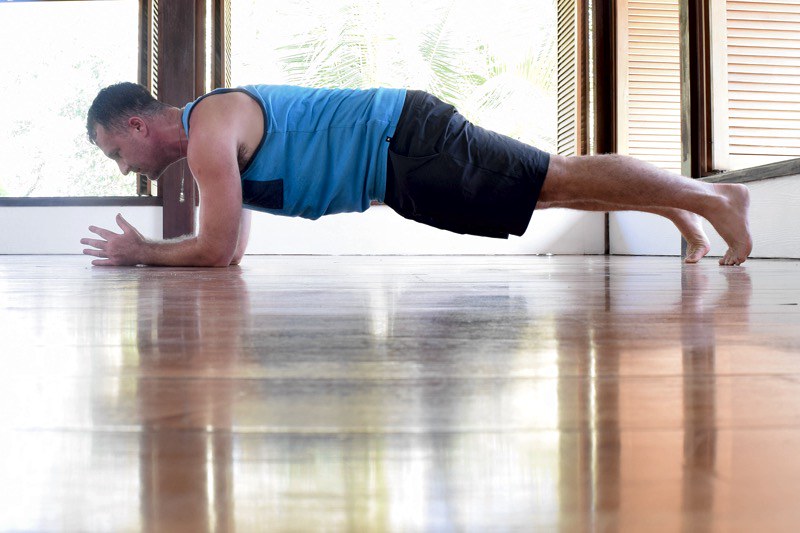
Setting Up For Success
The key to unlocking a great forearm balance practice is to have the correct props and set yourself up correctly.
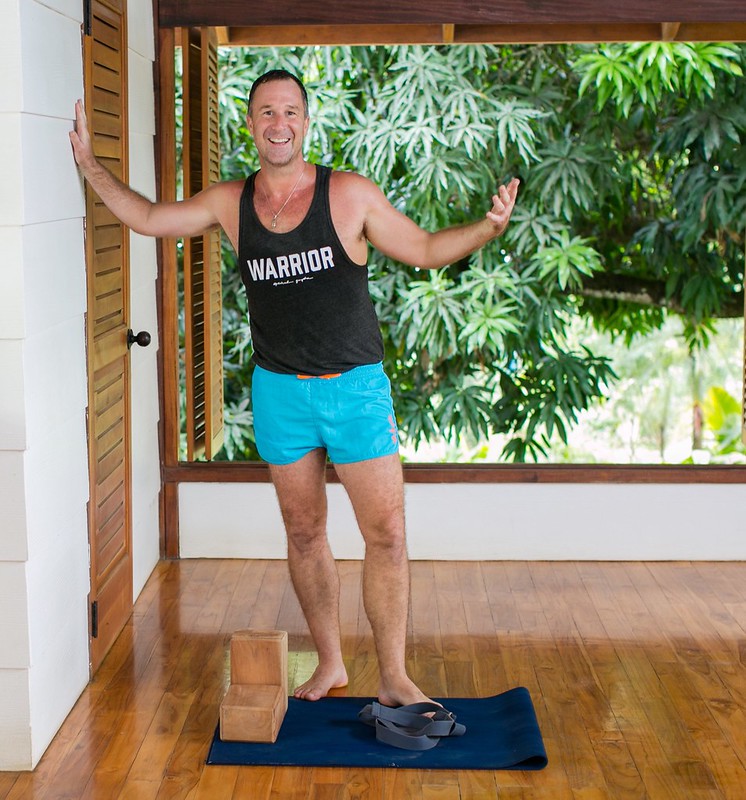
You will need:
- Yoga Mat
- Yoga Strap
- One or Two Yoga Blocks
Step 1
As in the picture above, fold your yoga mat and place the mat against the wall.
Step 2
Now get your block out.
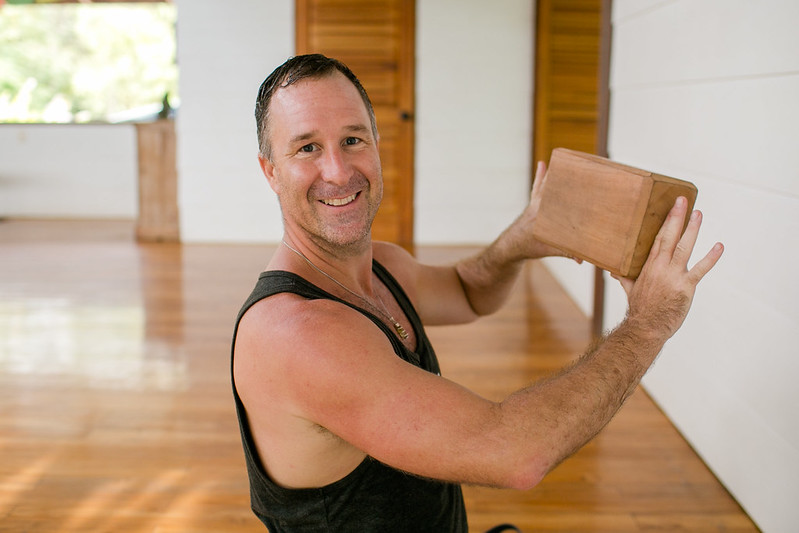
The yoga block is there to help you keep your hands the width of your shoulders.
The hands and elbows have a tendency to move around a lot. This movement destabilizes the pose making it more difficult to get in the posture and stay there. The block helps you to keep your hands in the correct place.
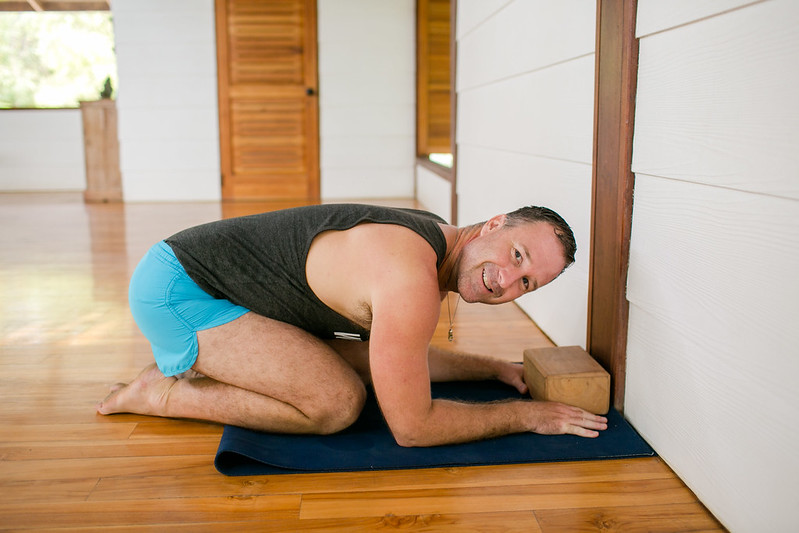
BUT what if your shoulders are bigger than the width of the block?
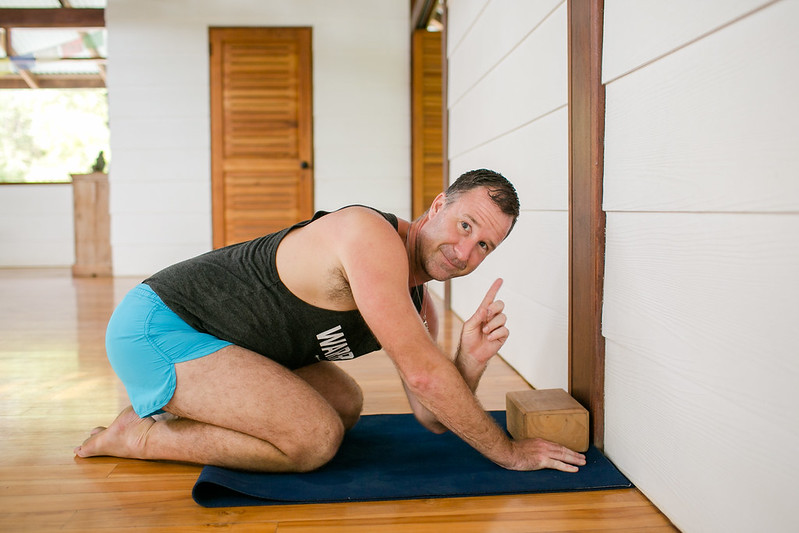
Then you will need to add another block. Place the block next to the block you have set up already. But place the second block vertically, as in the picture below. For the practice of forearm balance, I need two blocks because I have very wide shoulders.
(Note: sometimes you can find blocks that are bigger than the typical size of 10 x 6 x 4 inches. With these bigger blocks, you probably will not need two blocks.)
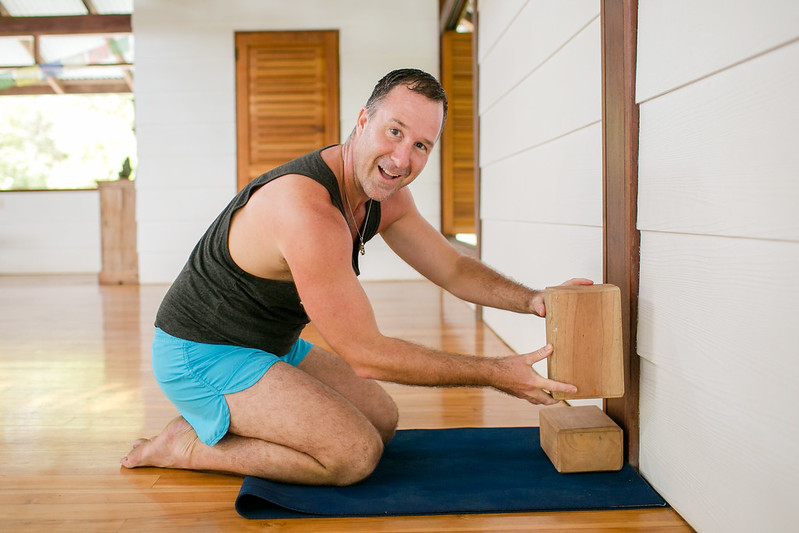
Step 3
Now you need to set up your yoga strap.
But why do I need a yoga strap? Remember before I said that your hands and elbows have a tendency to move around? While the block will help to stabilize your hands, the block will stabilize your elbows. Stabilizing your elbows will give you more power in this pose to get up more effortlessly and be able to stay in it longer.
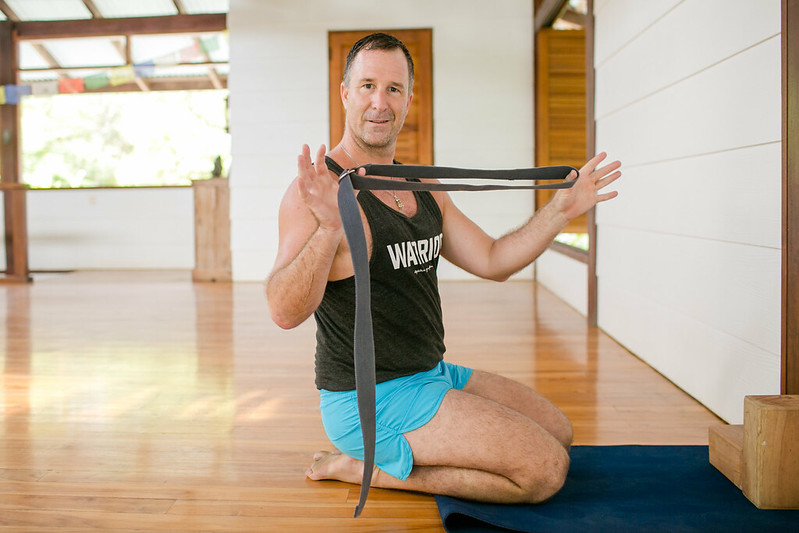
With both ends of the strap connected, you will want to measure the strap. It should be shoulder width distance apart.
More specifically, the measurement is approximately from inner shoulder to under shoulder, just as in the photo below.
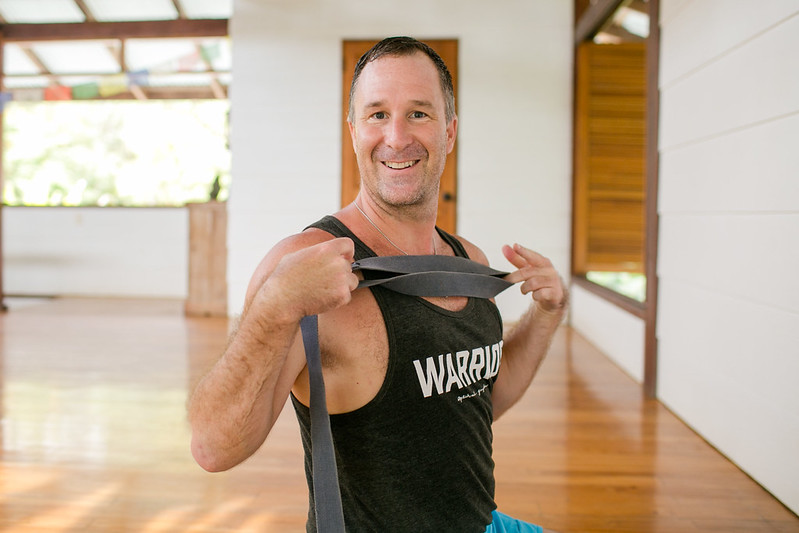
Once you have the measurement completed, then weave your arms through the strap. The strap should come around the mid-upper arms.
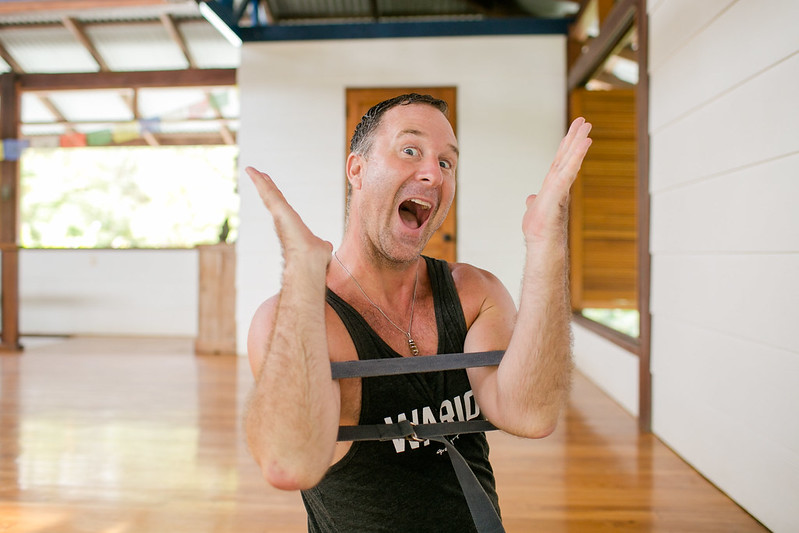
And now your strap is set up!
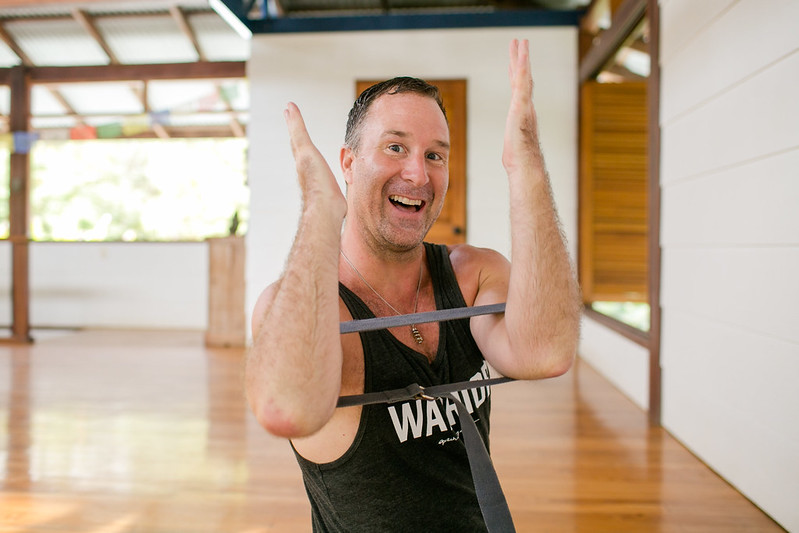
Step 4
Now it is time to practice.
Come onto your forearms and knees. Place the hands on either side of the blocks.
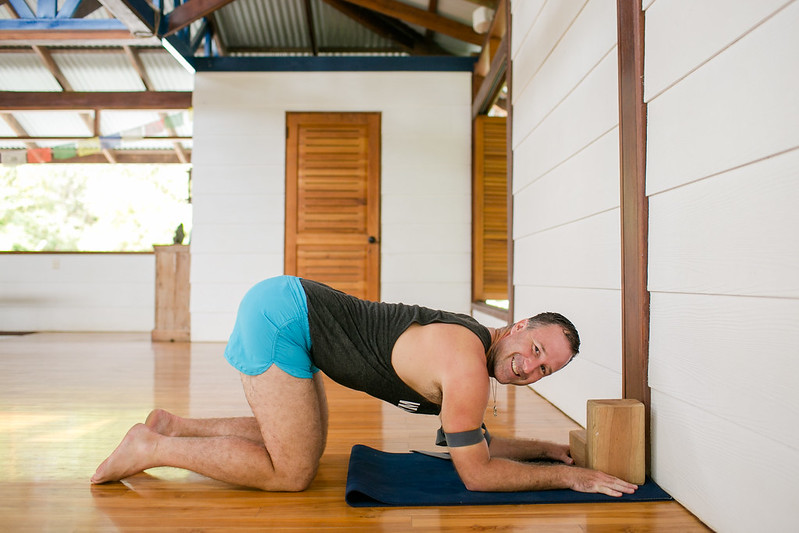
Before moving on, pause here for a moment. This is yoga after all. Take this moment to go inward. Feel your core. Feel your inner strength. Feel your indomitable will growing. Visualize yourself doing the pose.
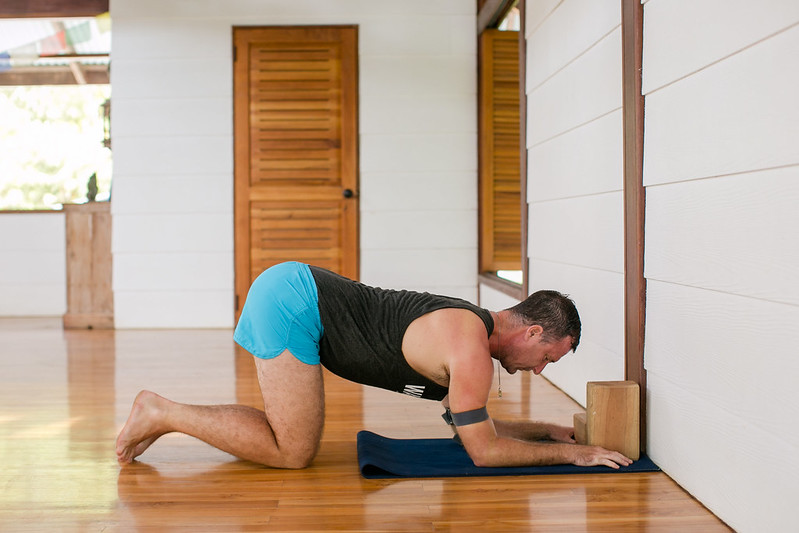
When you feel that you are ready, lift your knees off the floor coming into this modified version of downward dog.
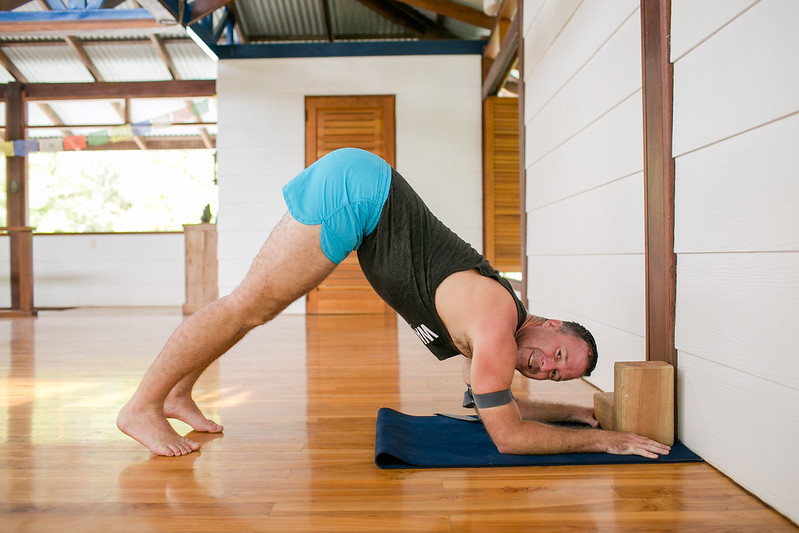
Step 5
Now that you are set up and ready to go, practice kicking up with your dominant leg. Follow the exact same instructions as we practice for handstand.
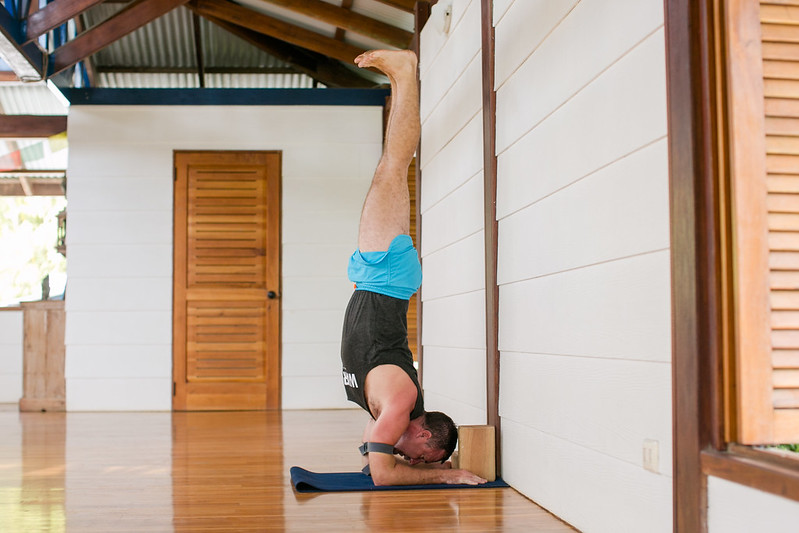
You definitely want to be able to work on staying up in forearm balance pose for 1-minute to 2- minutes.
Step 6
Now that you have become experienced in this posture, you can start to move the yoga mat further away from the wall. This will give you some space to bend your knees and start moving your feet/toes towards your head.

This is starting to move you toward being able to do a posture called scorpion pose.
As you can see in the picture below, I am not able to move deeply into the final pose called scorpion. But I can assure you, that I am not a person who is less happy because of it.
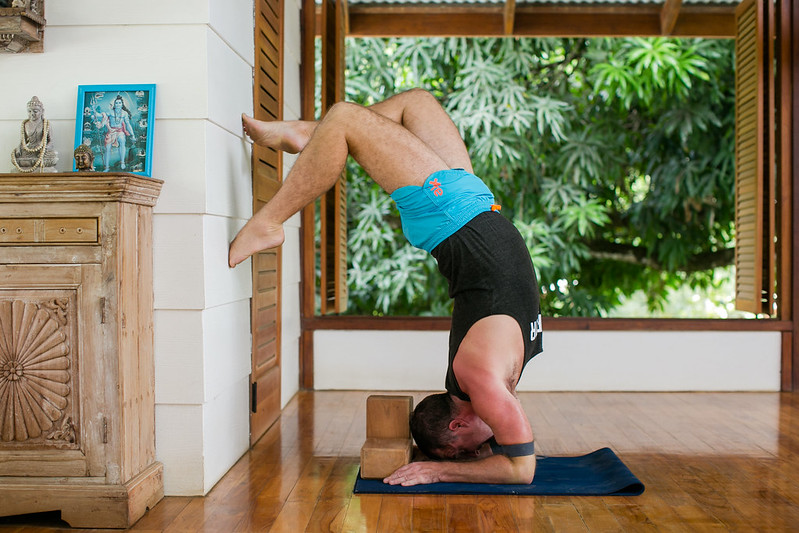
As you do these harder and more challenging postures, it is important to remember the “why?” Why are you doing these poses? Why do you do any poses?
Our western culture has turned many yoga classes into circus shows. Many people competing to do the best pose or to be the one who goes into the pose the deepest.
From a Hatha Yoga perspective, we do these postures to move energy… to become a greater force for good in the world and to be a happier person.
So ask yourself if your yoga is truly helping you to become a greater force for Good in the world. If it isn’t, change your practice or change your teacher.
Ready to go deeper into your practice? Join my next yoga teacher training.
All photos credited to the talented Maria Hillier.
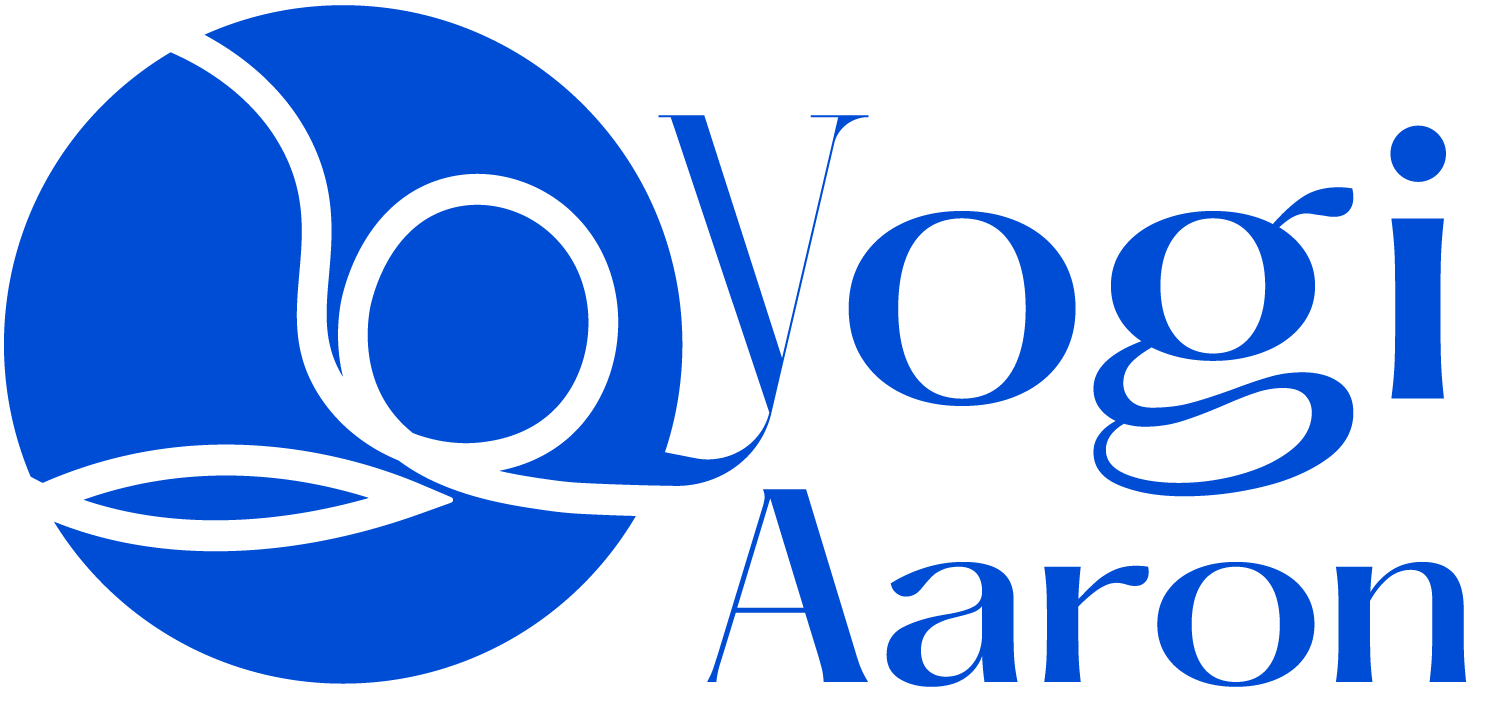
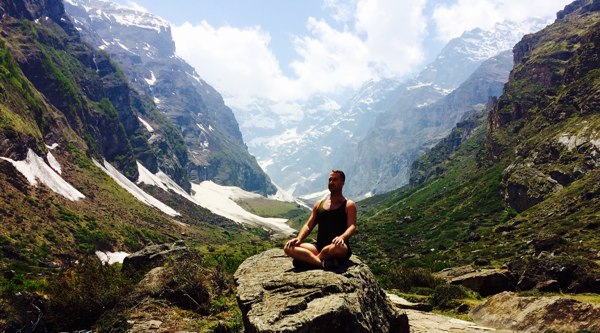
I totally loved this article and agree with every last thing you have said! I love that you have embraced BKS Iyengar as the “Father of Props” and how beneficial their use is to us practitioners of Yoga. I also loved all the photographs which show your joy filled expressions in the pursuit of both your Teaching Skills and your love of the pose.
Thanks Mahala Veda. I am thrilled you loved this. I love to show people the limitless possibilities of what they and the body can do.
Rad article!! Thank you!! Love and light Xx